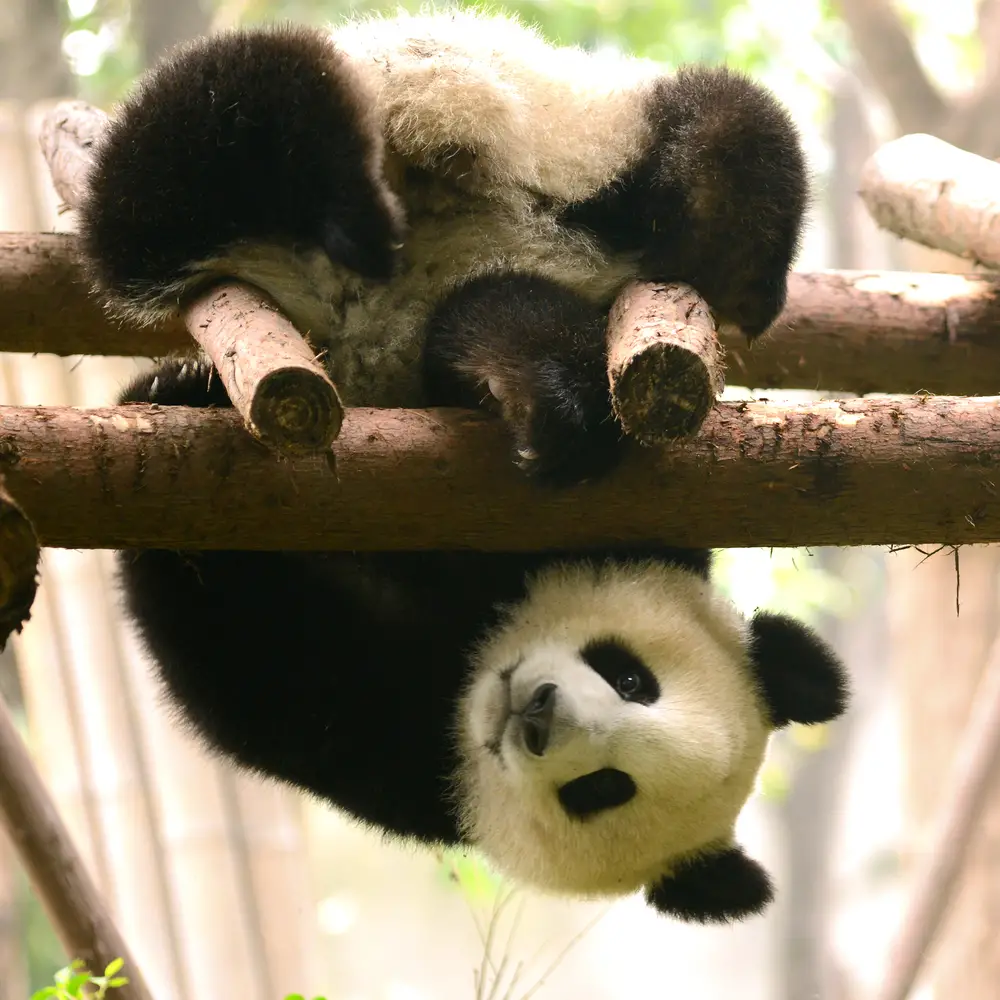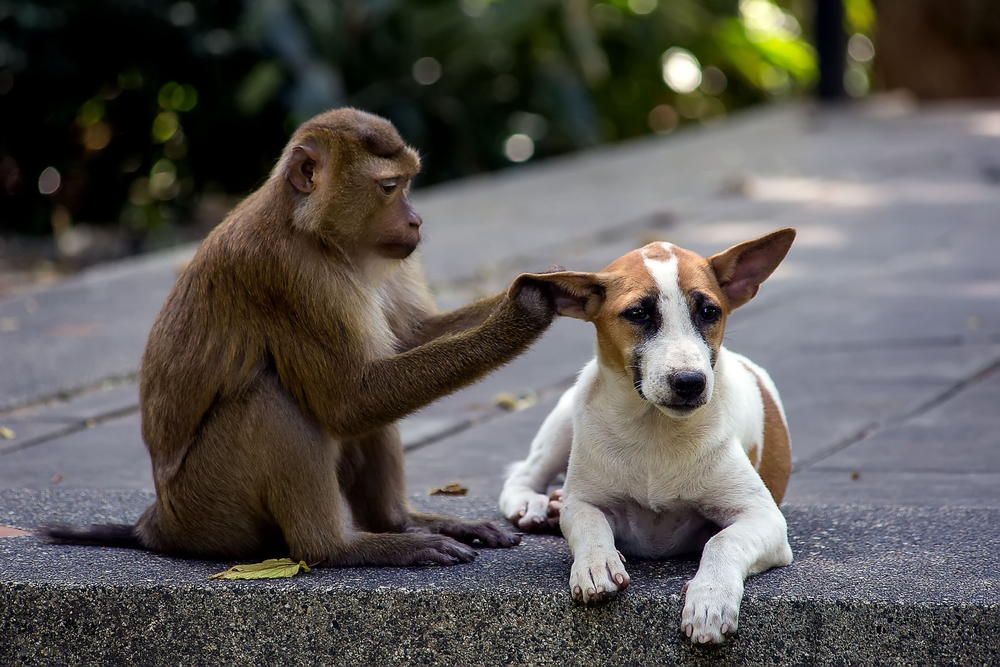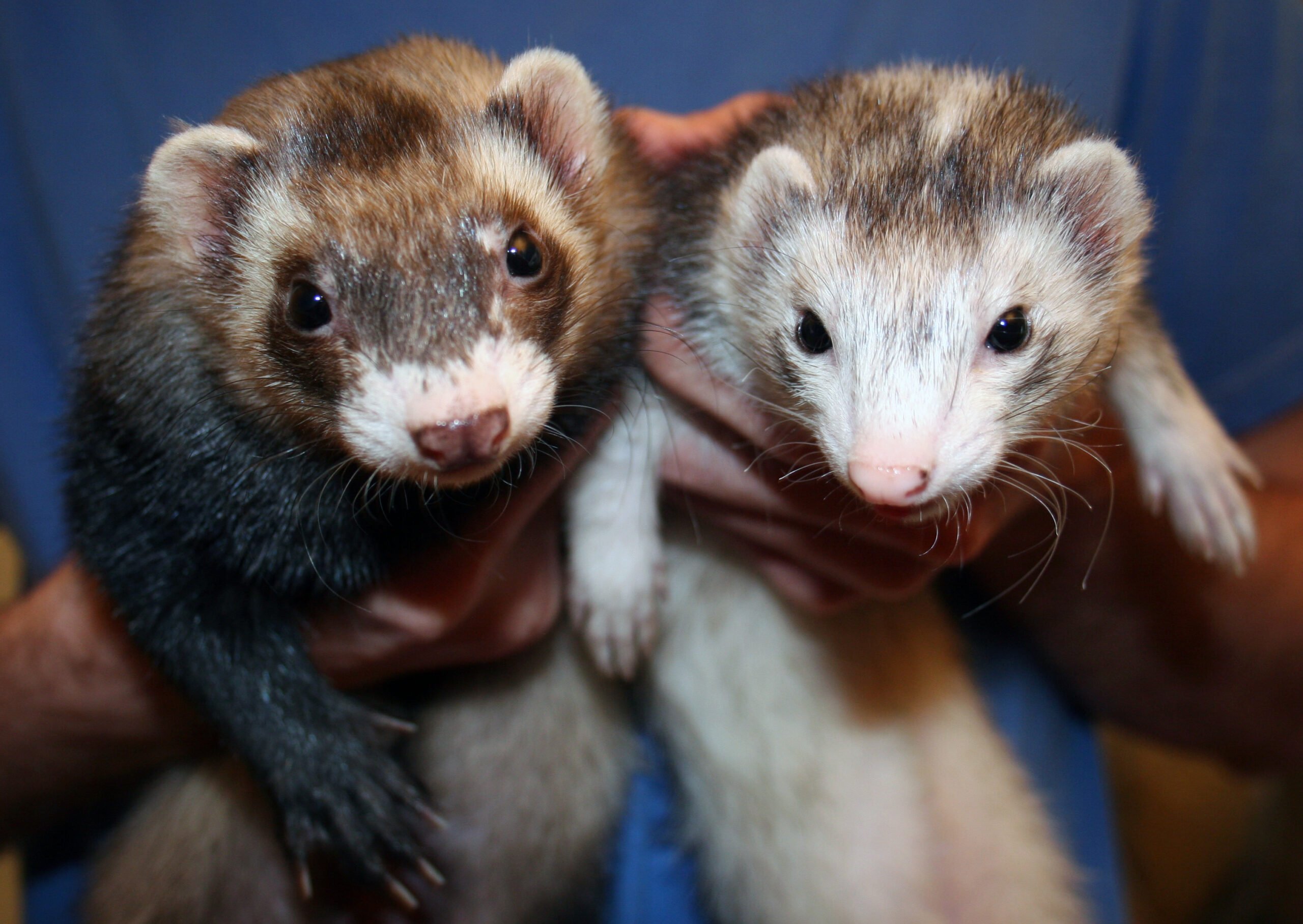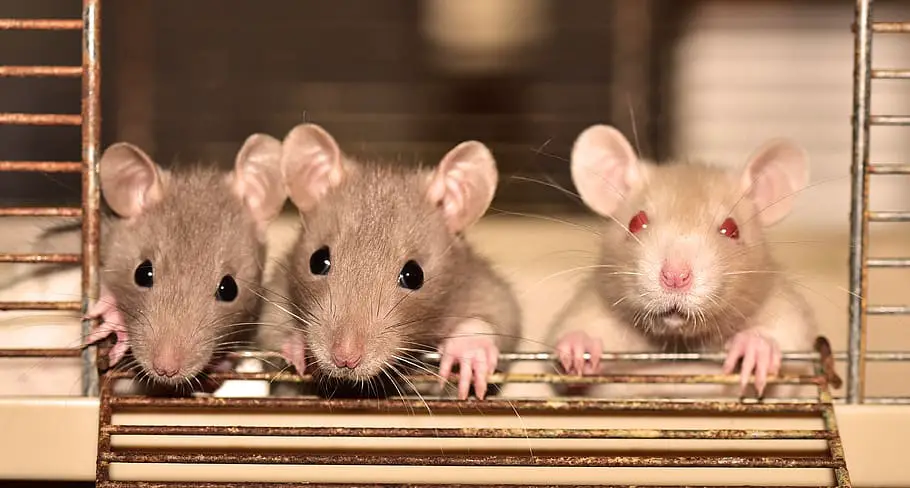Animals, much like people, are often driven by the pursuit of pleasure and reward. This craving is often linked to dopamine, the neurotransmitter responsible for feelings of pleasure, reward, and motivation. Some animals have taken this pursuit to thrilling heights, engaging in behaviors that may seem oddly familiar to us. Here are 14 animals that thrive on the rush of dopamine and a peek into the science that explains it all.
1. Dolphins and Their Love for Play

Dolphins are well-known for their playful nature, and it’s not just for show. These intelligent marine mammals engage in activities like surfing waves, playing with seaweed, or riding the wakes of boats purely for the fun of it. Scientists have observed that such play might stimulate the release of dopamine, reinforcing the behavior. This playful behavior is thought to enhance social bonds and problem-solving skills.
Research published in the Journal of Comparative Psychology highlights that dolphins use play as a form of social learning and cognitive development. By engaging in playful activities, they refine both social and physical skills crucial for survival. Moreover, their capacity for play is a sign of high intelligence, blending fun with functionality. It’s a reminder that sometimes the most effective learning happens when you’re having a good time.
2. Crows and Their Fascination with Puzzles

Crows are often seen as the geniuses of the bird world, and they have a strong affinity for solving puzzles. Their intelligence allows them to engage in complex problem-solving activities, and they seem to enjoy the process itself, not just the reward. This tendency suggests a dopamine-driven thrill, akin to the satisfaction people get from solving a challenging crossword. Crows have been observed using tools, creating strategies, and even playing tricks on each other.
These avian Einsteins are known to thrive on mental stimulation, and research supports that solving puzzles releases dopamine in their brains. This indicates that for crows, the journey is just as rewarding as the destination. Their ability to solve puzzles is not just a party trick; it’s a survival skill honed by evolution. This complex interplay of intelligence and enjoyment positions crows as not only survivors but also innovators in the avian realm.
3. Cats and Their Love for the Hunt

Anyone who’s lived with a cat knows they can turn anything into a hunting expedition. From pouncing on a stray piece of string to ambushing an unsuspecting toy, cats are wired to hunt, even when they’re not hungry. This behavior is driven by the chemical cocktail of dopamine and endorphins, rewarding them for practicing such essential survival skills. The thrill of the hunt is as rewarding as the catch itself for these agile predators.
According to a study published in ScienceDirect, the predatory sequence in cats triggers dopamine release, providing a neurological reward for successful hunting behaviors. This sequence — from stalking to capturing — is an instinctual and pleasurable activity. Despite domestication, house cats retain this primal urge, often exhibiting hunting behaviors in play. This shows that even the most pampered feline can’t resist the call of their ancestral hunter instincts.
4. Dogs and Fetch: The Unending Cycle

If you’ve ever thrown a ball for a dog, you know they rarely tire of the game. Fetch isn’t just about retrieving an object; it’s about the excitement and anticipation of the chase. This repetitive action triggers dopamine release, making the game a powerful motivator for dogs. Fetch isn’t merely play; it’s a fundamental activity that strengthens the bond between dogs and their human companions.
The fetch game taps into a dog’s primal instincts to hunt and retrieve, skills that are deeply ingrained in their DNA. This cycle of throw-chase-return satisfies both their physical and mental needs, providing a full spectrum of benefits. Through fetch, dogs not only exercise but also engage in a complex social interaction that enhances their well-being. The simplicity of the game belies its profound impact on a dog’s happiness and health.
5. Bears and the Joy of Climbing

Bears, despite their formidable size, are remarkably skilled climbers. Whether it’s scaling trees to forage for food or simply to enjoy the view, the act of climbing can provide a significant dopamine rush. This activity requires strength and coordination, engaging both their minds and bodies in a rewarding exercise. Bears often climb for fun, and this behavior is vital for young cubs as they develop survival skills.
The Journal of Mammalogy explains that climbing behaviors in bears are linked to cognitive development and physical fitness. Climbing not only fulfills their instinctual needs but also stimulates their brains, contributing to overall health. For bears, these climbs are not just utilitarian but a source of enjoyment and exploration. So, next time you see a bear perched high in a tree, remember it’s not just about the berries — it’s also about the thrill.
6. Otters and Water Play

Otters are nature’s merry pranksters, known for their playful antics in the water. Sliding down muddy banks, chasing each other, and playing with objects are all part of their daily routine. This behavior isn’t just adorable; it’s essential for their neurological and social development. The play triggers dopamine release, providing a sense of pleasure and reinforcing social bonds.
Water play enhances otter’s agility and coordination, crucial traits for survival in aquatic environments. These activities allow otters to practice hunting and escape maneuvers, crucial for evading predators. Besides, their playful interactions serve as a social glue, strengthening group dynamics and cooperative behavior. Otters remind us that play is as vital for development as it is for joy.
7. Elephants and Their Fondness for Mud Baths

Elephants are known to indulge in mud baths, a behavior that serves multiple purposes beyond cooling off. Rolling and splashing in mud is a social activity that strengthens group bonds and provides much-needed skin care. The tactile experience of a mud bath is believed to stimulate dopamine release, reinforcing this essential behavior. For elephants, it’s as much about camaraderie as it is about cleanliness.
As highlighted by the African Wildlife Foundation, mud baths play a critical role in the social structure of elephant herds. These activities offer a break from the search for food and water, fostering social interactions and reinforcing group cohesion. Mud baths also protect elephants from parasites and sunburn, showcasing a perfect balance between utility and pleasure. This ritual underscores the importance of social behaviors in maintaining the health and happiness of these majestic creatures.
8. Parrots and Vocal Mimicry

Parrots possess an impressive ability to mimic sounds, a skill that captivates and connects them with humans. This vocal mimicry is more than a party trick; it’s a complex behavior that stimulates their highly developed brains. The process of learning and replicating new sounds is rewarding, likely releasing dopamine and encouraging continued practice. It’s a fascinating intersection of communication, entertainment, and cognitive challenge.
For parrots, vocal mimicry is an essential tool for survival in the wild, aiding in social bonding and territory establishment. In human environments, it becomes a bridge between species, fostering unique relationships. The ability to replicate complex sounds reflects their intelligence and adaptability. Through mimicry, parrots entertain, communicate, and thrive, reminding us of the power of voice in the animal kingdom.
9. Monkeys and Their Social Games

Monkeys are some of the most social creatures, and their playful antics are vital for their social structures. From mock fights to chasing games, these activities release dopamine, reinforcing bonds and hierarchies within a troop. Play is an essential means of learning boundaries, social cues, and survival skills. It’s a reminder that sometimes the best lessons occur outside formal teaching.
These social games are more than just fun; they are critical for maintaining the complex social dynamics that define monkey groups. Through play, monkeys develop trust, cooperation, and communication skills. The dopamine-driven pleasure of these games fosters a sense of community and belonging. Monkeys demonstrate that even in the wild, play is a serious business with profound benefits.
10. Squirrels and Their Acrobatics

Squirrels are the acrobats of the animal world, leaping from branch to branch with remarkable agility. These high-flying feats are driven by a combination of necessity and thrill, likely releasing dopamine in their brains. Beyond gathering food, these aerial antics strengthen their physical skills and spatial awareness. Squirrels turn even the most mundane tasks into opportunities for adventure.
Their daring exploits aren’t just random acts of mischief; they are critical exercises in survival and adaptability. By navigating complex environments, squirrels hone their abilities to escape predators and locate food. These activities are as much about mental stimulation as they are about physical prowess. Squirrels remind us that sometimes life’s greatest challenges also offer the most exhilarating rewards.
11. Ferrets and Their Love for Tunnels

Ferrets have an insatiable curiosity and a penchant for tunneling through any available space. This behavior taps into their natural instincts as burrowers, providing a dopamine-fueled thrill akin to an explorer charting new territory. Exploring tunnels and tight spaces keeps ferrets physically active and mentally sharp. It’s a delightful blend of play and instinctual behavior.
Tunneling is a vital part of a ferret’s natural repertoire, offering both shelter and hunting advantages in the wild. In domestic settings, this behavior translates to a love for tubes and tunnels, satisfying their need for exploration. The thrill of discovery and the joy of movement provide a rich, rewarding experience. Ferrets remind us that sometimes the journey is more important than the destination.
12. Rats and Their Puzzle-Solving Skills

Rats are surprisingly adept at solving puzzles, a skill that engages their brains and brings a dopamine rush. These activities are not just about obtaining a treat but also about the intellectual challenge they present. Puzzle-solving is a testament to their intelligence and adaptability, highlighting their ability to learn and innovate. Rats find joy in the process, illustrating the intrinsic value of curiosity.
In scientific settings, rats often outperform other animals in mazes and problem-solving tasks. Their cognitive abilities are robust, allowing them to navigate complex situations with ease. The pleasure derived from puzzle-solving is an example of how intellectual pursuits can be rewarding in themselves. Rats show us that even the smallest creatures can exhibit remarkable ingenuity.
13. Sea Lions and Their Balancing Acts

Sea lions are the circus performers of the ocean, renowned for their balancing acts and playful antics. This behavior isn’t just a spectacle; it’s a mentally rewarding activity that stimulates their problem-solving skills. Balancing objects requires precision and focus, engaging their brains in a challenging exercise. This not only provides physical exercise but also mental stimulation and social interaction.
Their impressive balancing acts are often seen in the wild and in captivity, demonstrating their adaptability and intelligence. Sea lions balance objects as a form of play, exploring the limits of their dexterity and coordination. The dopamine release during these acts reinforces the behavior, making it a fun and valuable skill. Sea lions prove that sometimes, balancing life is as much about play as it is about precision.
14. Antelope and Their High-Speed Escapades

Antelope are known for their incredible speed and agility, traits that are essential for evading predators. These high-speed chases provide a dopamine rush, turning what might be a life-and-death scenario into a thrilling escape. Running at top speeds not only serves a survival purpose but also enhances their physical fitness and endurance. Even in the face of danger, there’s an element of exhilaration.
Their need for speed is driven by evolutionary demands, forcing them to develop powerful muscles and quick reflexes. The thrill of running is a built-in reward system, ensuring that antelope are always prepared for the next challenge. This natural high reinforces their survival instincts and keeps them sharp. Antelope remind us that sometimes the greatest rewards come from pushing our limits.
